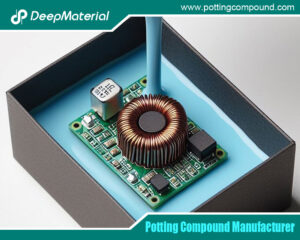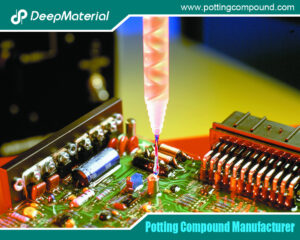

Non Conductive Coatings for Electronics: An In-Depth Overview
- Electronic Potting Material Manufacturer
- September 10, 2024
- Acrylic Conformal Coating, acrylic vs silicone conformal coating, circuit board potting compound, conformal coating, conformal coating electronics, conformal coating for electronics, conformal coating for pcb, conformal coating for pcb standards, Conformal Coating in Electronic, conformal coating in electronics market, conformal coating manufacturers, conformal coating material, conformal coating material types, conformal coating overspray, conformal coating pcb, conformal coating silicone, conformal coating types, conformal coating waterproof, electrical potting compound, Electronic Encapsulant Potting Compound, Electronic Epoxy Potting Compound, Encapsulants and Potting Compounds Suppliers, Industrial Conformal Coating, non-conductive coatings for electronic, non-conductive coatings for electronics, pcb conformal coating, potting compound, Silicone Conformal Coating, Urethane Conformal Coating, uv conformal coating manufacturer, UV Cure Conformal Coating, UV Cure Potting Compound, uv epoxy electronic adhesive glue
Non Conductive Coatings for Electronics: An In-Depth Overview
In the modern electronics industry, ensuring the reliability and longevity of electronic components is crucial. One effective method to achieve this is by applying non conductive coatings. These coatings are pivotal in safeguarding electronic devices from environmental factors and enhancing performance. This article explores the significance of nonconductive coatings, their types, applications, and the technologies driving their development.
1. The Importance of Non Conductive Coatings
Non Conductive coatings are materials applied to electronic components for insulation, protection, and performance enhancement. They serve several critical functions:
- Electrical Insulation:Non Conductive coatings prevent electrical shorts and malfunctions by insulating conductive parts of electronic devices.
- Environmental Protection:They protect components from moisture, dust, and chemical exposure, which can cause corrosion and degradation.
- Thermal Management:Certain coatings help dissipate heat, thus improving the thermal management of electronic devices.
- Mechanical Protection:Coatings add a layer of mechanical protection, reducing the risk of physical damage during handling and operation.
These benefits make nonconductive coatings essential for various electronic applications, from consumer electronics to aerospace and medical devices.
2. Types of Non Conductive Coatings
Several nonconductive coatings are used in the electronics industry, each with unique properties and applications. Here are some of the most common types:
2.1. Epoxy Coatings
Epoxy coatings are widely used due to their excellent adhesion, chemical resistance, and electrical insulating properties. They often protect circuit boards and components from moisture and mechanical damage. Epoxy coatings are available in various formulations, including those optimized for high-temperature resistance and flexibility.
2.2. Silicone Coatings
Silicone coatings are known for their flexibility, thermal stability, and resistance to extreme temperatures and environmental conditions. They are often used in applications where flexibility and resilience to temperature fluctuations are crucial, such as automotive and aerospace electronics.
2.3. Polyurethane Coatings
Polyurethane coatings offer excellent durability, chemical resistance, and abrasion resistance. They are commonly used to protect electronic devices from harsh environmental conditions and physical wear. Polyurethane coatings are also valued for their smooth finish and aesthetic appeal.
2.4. Acrylic Coatings
Acrylic coatings provide good electrical insulation and are easy to apply. They are often used for general-purpose applications requiring moderate protection and insulation. Acrylic coatings are also known for their quick-drying properties and UV resistance.
2.5. Conformal Coatings
Conformal coatings are designed to conform to the shape of the electronic components and provide a protective layer over the entire surface. They are commonly used in circuit board protection to shield against moisture, dust, and other contaminants. Conformal coatings can be applied in various materials, including epoxy, silicone, and acrylic.
3. Application Methods
The application of nonconductive coatings can significantly impact their effectiveness and performance. Several methods are used to apply these coatings, each with its advantages and considerations:
3.1. Spray Coating
Spray coating is a popular method for applying non conductive coatings, particularly for large surfaces and irregular shapes. It provides an even and uniform application but requires careful control of the spray parameters to avoid over-spraying or under-spraying.
3.2. Dip Coating
Dip coating involves immersing the electronic component in a coating solution. This method ensures complete coverage and is often used for small—to medium-sized components. Controlling the dipping time and drying process is essential to achieving the desired coating thickness and uniformity.
3.3. Brush Coating
Brush coating is suitable for applications where precise application is required. It is often used for touch-ups or small-scale applications. Brush coating allows for controlled application but may not be ideal for covering large surfaces or achieving a uniform coating thickness.
3.4. Roll Coating
Roll coating is used to apply coatings to flat surfaces and is commonly employed in manufacturing printed circuit boards (PCBs). This method provides a consistent and even coating but may not be suitable for components with complex shapes.
4. Technological Advancements and Trends
Non Conductive coatings are continually evolving, with advancements in materials and technologies driving innovation. Some of the key trends and developments include:
4.1. Nanotechnology
Nanotechnology is making significant strides in the development of nonconductive coatings. Nano-coatings offer enhanced performance characteristics, such as improved adhesion, increased durability, and excellent environmental resistance. Nanotechnology enables the creation of thin, highly effective coatings that provide exceptional protection without adding significant bulk.
4.2. Green and Sustainable Coatings
The electronics industry has a growing emphasis on environmentally friendly and sustainable coatings. Green coatings are formulated with low volatile organic compounds (VOCs) and use non-toxic materials. These coatings aim to reduce the environmental impact and enhance the safety of electronic manufacturing processes.
4.3. Advanced Curing Technologies
Advancements in curing technologies are improving the efficiency and effectiveness of nonconductive coatings. For example, UV-curable coatings use ultraviolet light to accelerate curing, resulting in faster production times and enhanced coating properties. Thermal curing methods are also optimized for better performance and reduced energy consumption.
4.4. Smart Coatings
Innovative coatings incorporate sensors and other technologies to monitor and respond to changes in environmental conditions. These coatings can provide real-time feedback on temperature, humidity, and pressure factors. Innovative coatings are being developed for applications where dynamic protection and performance monitoring are essential.
5. Applications and Case Studies
Non Conductive coatings are applied in various industries and applications, each with specific requirements and challenges. Here are some notable examples:
5.1. Consumer Electronics
Non Conductive coatings protect circuit boards, connectors, and other components in consumer electronics from moisture and physical damage. Smartphones and tablets often feature coated internal components to enhance durability and reliability.
5.2. Aerospace Industry
The aerospace industry relies on non conductive coatings to protect electronic systems from extreme temperatures, vibrations, and corrosive environments. Coatings used in this sector must meet rigorous performance and safety standards.
5.3. Automotive Industry
Automotive electronics are subject to harsh conditions, including high temperatures, vibration, and chemical exposure. Non Conductive coatings protect components such as sensors, control units, and wiring from these challenges, ensuring reliable operation.
5.4. Medical Devices
Non Conductive coatings are applied to electronic components in medical devices to ensure safety and reliability. Coatings must meet stringent regulations and standards to ensure compatibility with medical environments and patient safety.
Conclusion
Non Conductive coatings ensure electronic devices’ performance, reliability, and longevity. Various types of coatings are available, including epoxy, silicone, polyurethane, and acrylic. Manufacturers can select the most suitable option based on specific application requirements. Technological advancements, such as nanotechnology and green and smart coatings, drive innovation in this field. As electronic devices evolve and face new challenges, non conductive coatings will remain essential in maintaining their functionality and durability.
For more about choosing the top non conductive coatings for electronics: an in-depth overview, you can pay a visit to DeepMaterial at https://www.pottingcompound.com/ for more info.
Recent Posts
- Potting Compound vs. Epoxy: A Comprehensive Comparison
- Potting Compound for PCB
- In – depth Analysis of the Curing Characteristics of Electronic Potting Compounds
- A Comprehensive Analysis of the Environmental Performance of Encapsulating Materials: From Regulations to Practices
- A Comprehensive Analysis of PCB Encapsulation Quality Inspection: Innovative Application of Non-Destructive Testing Technologies
- Analysis of the Improvement of the Seismic and Impact Resistance Performance of PCB by Encapsulation
- A Comprehensive Guide to Evaluating the Reliability of Encapsulation Materials for Encapsulated PCBs
- In-depth Analysis of the Reparability of Encapsulation Materials
- A Comprehensive Analysis of Post-Potting PCB Issues and the Repair and Rework of Potting Materials
- A Comprehensive Analysis of the Compatibility between Encapsulation Materials and PCBs: Exploration of Chemical Reactions and Their Impact on Performance







